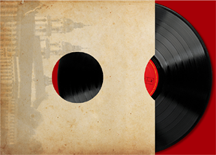Banta, Edwin: Another Approach to the Finale of the Symphony No. 9
In generating the attached 'cut' Finale development, I have used the MWV "Finale Faksimile-Ausgabe" as a primary source with Phillips 'reconstruction' as a secondary source (in generating this 'cut' Finale development, I have endeavored to avoid including material arising from Bruckner's occasional use of empty staves as reminders or musical explorations). In the absence of any tempo indications in the Faksimile-Ausgabe, I have generally adopted the tempi used by William Carrigan in his latest completion. Finally, the caveats and notes below use un-renumbered bifolio values. Caveat 1: Bruckner indicates (after a grand pause at measure 12 of bifolio 16C) the conclusion (-de) of a cut beginning on a now missing bifolio 13. Presuming the exposition ended on the missing bifolio 12, I presume bifolio 13 to be the development's beginning. In the absence of a bifolio 13 indicating the cut's beginning (vi-), I have mimicked Bruckner's plan in the Adagio (repeating a few measures for the exposition's start) by simply quoting the initial measures of the exposition (through the end of the tympani continuo). Caveat 2: At measure 7 of bifolio 23, I have (as a necessary option) followed Bruckner's older, longer cut to measure 9 of bifolio 25 (Bruckner's subsequently preferred, shorter cut must have ended on a missing bifolio). Caveat 3: Following Phillips suggestion, I presume the cut beginning at measure 13 of bifolio 26 ends at measure 13 of the missing bifolio 27. Because Bruckner metrical numbers indicate the first four measures of bifolio 28 are the last four measures of an eight measure group, I have used the first two (identical) measures of bifolio 28 (transposed an octave higher to match last note of measure 12 on bifolio 26) twice to replace the four missing measures. Note 1: At measure 8 of bifolio 22, I have added the second and third horn parts shown in measures 10 and 12 on the presumption that Bruckner simply forgot to do so. Note 2: In concluding this 'cut' Finale development, I have omitted the two notes entered in pencil on the oboe staff (these may be simply the first two notes of a Bruckner sketch for the subsequent chord progression). In their place, I have appended eight (transposed) measures, beginning at letter X of Bruckner's Te Deum (appropriately accompanying words non confundar in aeternum -- let me not be confounded into eternity); they include the chord progression I heard in my mind (but did not immediately recognize) when first working through the Finale in Orel's summary twenty-five years ago and prior to my being aware of any Finale continuation. The notes are (aside from the transposition) exactly as Bruckner scored them (minus the vocal parts), but with quarter notes in the string accompaniment expressed, when needed, as a pair of eighth notes to maintain the existing rhythm. Edwin Banta To hear a MIDI file of Mr. Banta's reconstruction, click here. The read Mr. Banta's original article in the Bruckner Journal, click here. |







